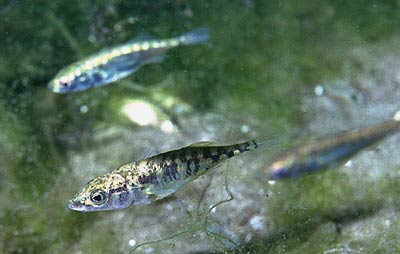Facts About Three-spined stickleback
The three-spined stickleback is a captivating fish species that thrives in coastal and freshwater habitats across the Northern Hemisphere. Scientists are particularly drawn to this species due to its diverse morphology, adaptability to various environments, and intriguing behaviors.
One remarkable attribute of the three-spined stickleback is its capacity to thrive in both saline and freshwater habitats. This species is well-known for constructing nests, engaging in complex courtship rituals, and possessing robust defenses against predators. Its abundance in the wild and suitability for aquarium life further enhance its utility for scientific research.
Morphologically, the three-spined stickleback exhibits a laterally compressed body covered with bony plates that function like armor. Depending on their habitat and life stage, these fish can display significant variation in color, body armor, and fin shape. There are two primary forms: anadromous sticklebacks, which migrate from saltwater to freshwater to spawn, and freshwater sticklebacks, each exhibiting distinctive traits and behaviors.
In terms of reproduction, male sticklebacks play a pivotal role by constructing nests, performing courtship displays, and tending to the eggs. Their vibrant red coloration is instrumental in attracting females and signaling their fitness. Additionally, sticklebacks exhibit cooperative behaviors, such as collectively monitoring predators, often employing a "tit-for-tat" strategy where they take turns based on the situation.
The three-spined stickleback possesses exceptional vision, including the ability to perceive ultraviolet light courtesy of its tetrachromatic eyesight. They also serve as hosts in the life cycle of parasites like Schistocephalus solidus. Genetic studies on sticklebacks have provided valuable insights into their adaptive and evolutionary mechanisms, with some populations having their genomes entirely sequenced.

 Sweden
Sweden